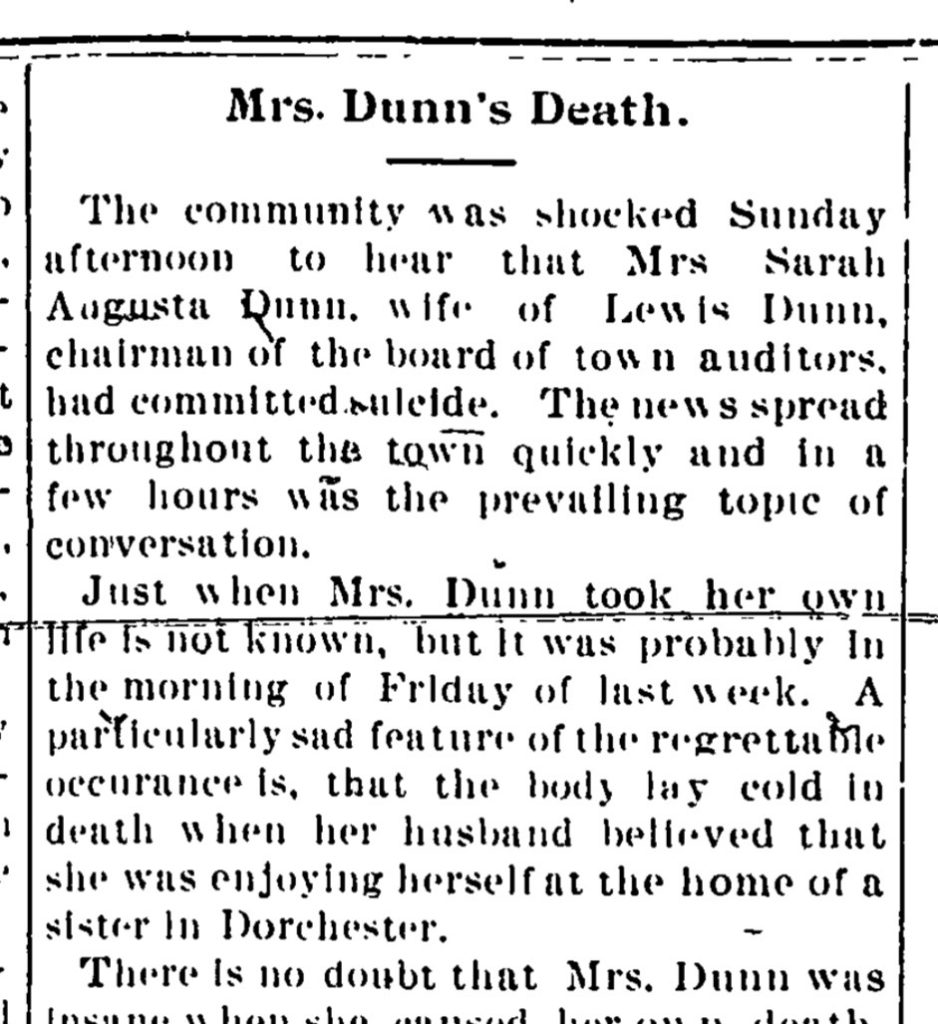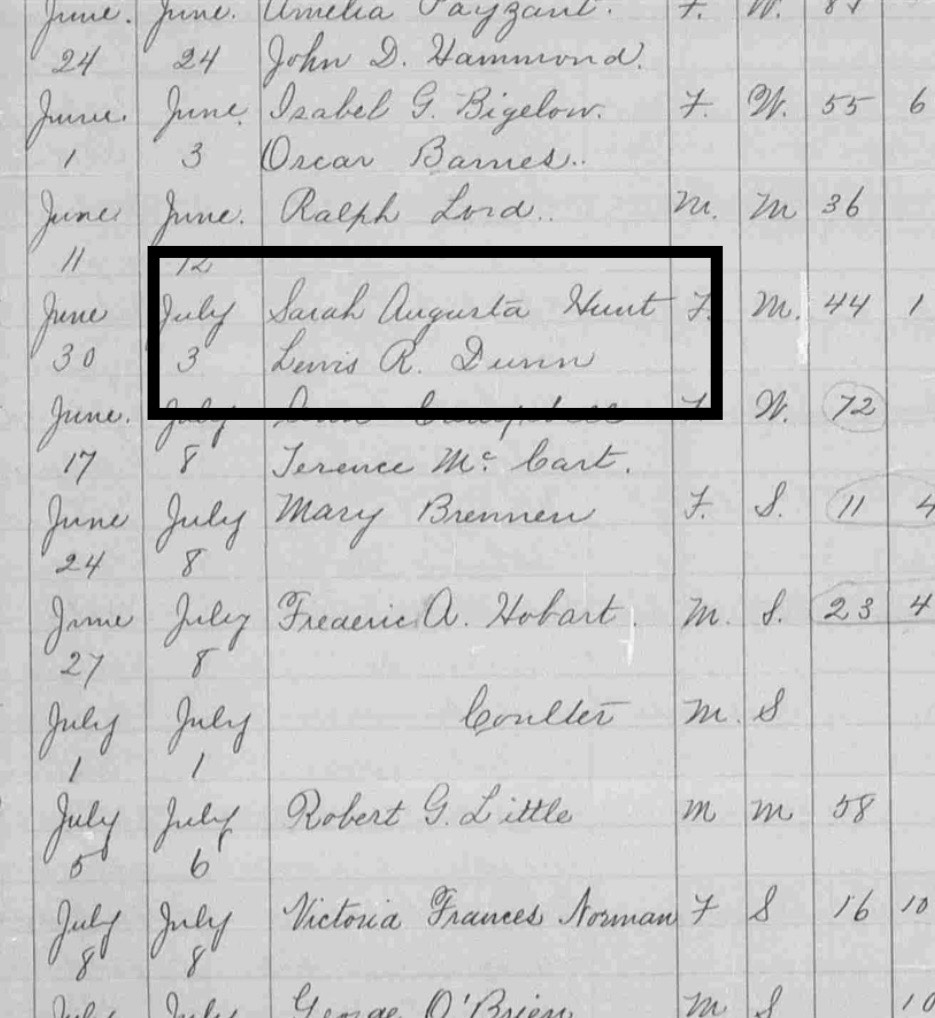Dunn, Lewis Currier
Lewis Currier Dunn, son of Lewis Roberts and Sarah Augusta Dunn, died at only 4 months old on March 9, 1882. Seventeen years later the Journal carried the tragic news of Sarah Dunn’s death by suicide.

The Journal of July 8, 1899 reconstructs the chain of events this way: on the previous Friday Sarah Dunn told her family that she was going to visit her sister in Dorchester for the weekend. Sarah left the house, waited for the housekeeper to go out, then returned to the now empty house. She went to an upstairs bedroom, stuffed a teacup full of cotton batting, soaked the cotton batting in chloroform, then got into bed and pulled the covers over her head in order to suffocate on the fumes.
Sarah’s husband Lewis then spent the entire weekend under the impression that his wife was in Dorchester. He even entertained the idea of joining her there on Saturday night but changed his mind. On Sunday morning he sent his son Lewis to Dorchester so he could accompany his mother on the return trip. On Sunday afternoon, Lewis remembered a promise he had made to give some firecrackers to a neighbor’s child. He went upstairs to get the firecrackers and discovered his wife’s body. He ran to the house of his boss, Albert Burnham, told Burnham’s wife what had happened, and fainted.
At this point, 125 years after the fact, any true crime junkies and murderinos reading this are probably throwing things across the room, exclaiming how obvious it is that Lewis Dunn murdered his wife. How did he spend 48 hours in a house with a corpse and not realize it – in the summer no less? Why did he make a point of telling people he might go visit his wife in Dorchester if not to create the impression she was out of town? Why did he conveniently get his son out of the house hours before “discovering” the body?

I’ll admit that Lewis Dunn doesn’t look great here, but … maybe the housekeeper had the weekend off, maybe Sarah Dunn killed herself in a guest room, maybe the Dunns didn’t even sleep in the same room. There are definitely too many maybes for a solid case against Dunn, and that seems to have been the prevailing sentiment in 1899.
Another thing that doesn’t look great here, but is probably to be expected for the time, is The Journal’s lack of nuance when describing Mrs. Dunn’s state of mind:
There is no doubt that Mrs. Dunn was insane when she caused her own death. The deep melancholia with which she was afflicted as the result of the death of her boy Frank, last February, has been so pronounced as to raise in the minds of those who had the best chance to observe her closely, a fear that she would attempt to do what she finally did do.
From our modern perspective we can understand that a woman who had lost an infant earlier in life in addition to the above-mentioned Frank, who was in third or fourth grade when he died, could have been melancholic without being insane.

To bring it back to the burial ground, the infant Lewis Currier Dunn is likely in RMBG in an unmarked grave. The Journal story claims that Sarah Dunn was buried “at the family lot at Woodlawn,” but I was unable to find her or her husband on Find a Grave or the Woodlawn Cemetery website.
